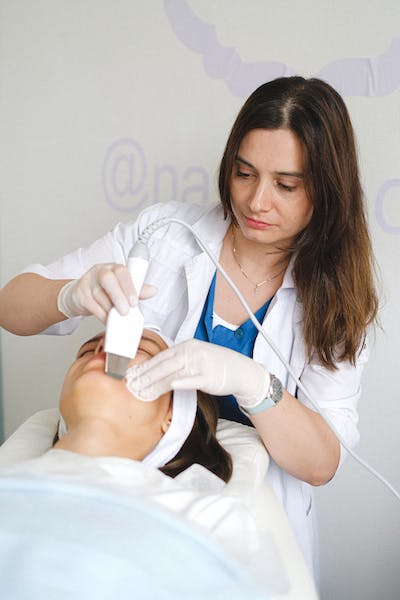Microblading has become increasingly popular in recent years as a way to achieve a more defined and natural-looking hairline. This semi-permanent makeup technique involves using a handheld tool to deposit pigment into the skin, creating the appearance of individual hairs. It is an especially good option for people who have thinning hair or want to fill in sparse areas of their hairline.
Here is a step-by-step guide on what to expect during a microblading treatment for your hairline:
- Consultation: Before the treatment, you will have a consultation with your microblading artist to discuss your desired look and any medical conditions or allergies that may affect the procedure. You will also need to sign a consent form.
- Preparation: The artist will clean your skin and apply a numbing cream to minimize discomfort. They will then draw a rough outline of the new hairline using a pencil or marker to guide the placement of the pigment.
- Microblading: The artist will use a handheld tool, called a microblade, to deposit pigment into the skin. The tool has a row of fine needles that make small cuts in the skin, allowing the pigment to be deposited into the upper layer of the dermis. The artist will carefully draw individual hair strokes to mimic the appearance of natural hairs.
- Aftercare: After the treatment, your artist will provide you with aftercare instructions to follow. These may include keeping the area clean and dry, avoiding certain activities (such as swimming or sweating), and applying ointment or moisturizer as directed. You will also need to return for a touch-up appointment about a month after the initial treatment to assess the healing process and add any additional pigment as needed.

It is important to choose a skilled and reputable microblading artist for your treatment. Look for someone who has received proper training and has experience performing the procedure. You should also ask to see before and after photos of their work to get an idea of their skill level.
One of the main benefits of microblading is that it can create a natural-looking hairline. The individual hair strokes mimic the appearance of real hairs, making it difficult to tell that the hairline has been enhanced. The pigment used in microblading is also carefully matched to your natural hair color, further contributing to the natural look.
Another advantage is that the results of microblading are semi-permanent, lasting about a year or longer depending on factors such as skin type and sun exposure. This means that you can enjoy the benefits of a fuller, more defined hairline without the need for daily maintenance.
There are a few potential drawbacks to consider with microblading. The procedure can be painful, although numbing cream is usually applied to minimize discomfort. There is also a risk of infection if the procedure is not performed by a skilled artist using sterile equipment. In addition, the pigment used in microblading may fade over time or change color, requiring touch-up treatments to maintain the desired look.
Conclusion
In conclusion, Microblading hairline is a semi-permanent makeup technique that can help create a natural-looking hairline by depositing pigment into the skin to mimic individual hairs. It is an effective option for people with thinning hair or sparse areas on their hairline, and the results can last for a year or longer. However, it is important to choose a skilled and reputable artist for the procedure and to follow proper aftercare instructions to minimize the risk of infection and maintain the desired results.


